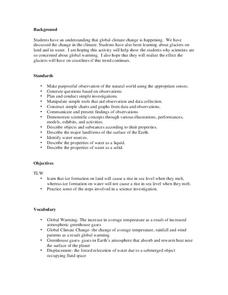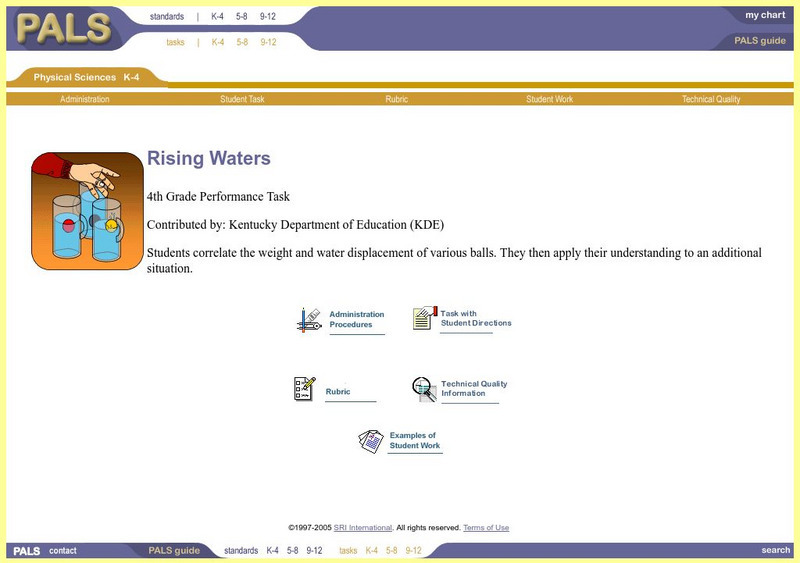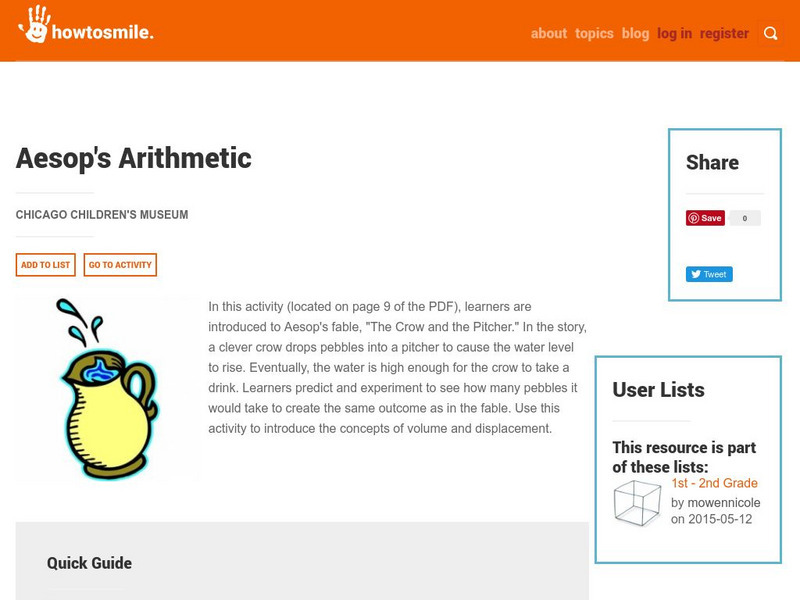Curated OER
Global Climate Change
Second graders investigate the effect of melting glaciers to sea level. In this earth science lesson plan, 2nd graders simulate the process in the lab by conducting an experiment using ice cubes and clay. They explain the consequences of...
Curated OER
The Buoyancy Factor
Students examine why some objects float in water while others sink and the ability of something to float does not depend entirely on its weight. Archimedes' principle is introduced and buoyant force is discussed. Practice calculations...
Curated OER
Volumw Measurement, English System
Eighth graders biew each volume container and discuss where they have seen them in their home, and how they have seen them used. They explore the different names of volume sizes and their equivalents towards one another. Students...
Curated OER
Metric Mania
Pupils observe how to measure in metric units. In this investigative lesson students compare different units of volume to see how things are measured.
TeachEngineering
Teach Engineering: The Physics of Fluid Mechanics
Five lessons about the study of fluid mechanics. The unit concludes with students applying what they have learned to determine the stability of individual above-ground storage tanks given specific storm conditions so they can analyze...
TeachEngineering
Teach Engineering: Above Ground Storage Tank Design Project
In this culminating activity, student groups act as engineering design teams to come up with improved storage tank designs to make them less vulnerable to uplift, displacement and buckling in storm conditions.
SRI International
Performance Assessment Links in Science: Rising Waters
A unique approach to determining size and weight of an object through water displacement: students are presented with a scenario along with a variety of balls made of different materials and pitchers of water. Working in small groups,...
Other
National Science Digital Library: Smile: Aesop's Arithmetic
A cross-curricular lesson integrating Aesop's The Crow and the Pitcher with an experiment testing the outcome of the fable using volume and displacement concepts.
Annenberg Foundation
Annenberg Learner: 5 Question Survey: Rising and Sinking
Find out your or your students' understanding of fluid displacement. Afterwards you can see how others answered the questions.
Science Struck
Science Struck: Piston Pump vs. Diaphragm Pump
Learn the difference between a piston pump and a diaphragm pump, both of which are positive displacement pumps. Includes chart listing characteristics for each, their different types, and their advantages and disadvantages.
Concord Consortium
The Concord Consortium: Molecular Workbench: Archimedes' Buoyancy Principle
Adjust the ratio of the masses of different particles to see how buoyancy is affected.










